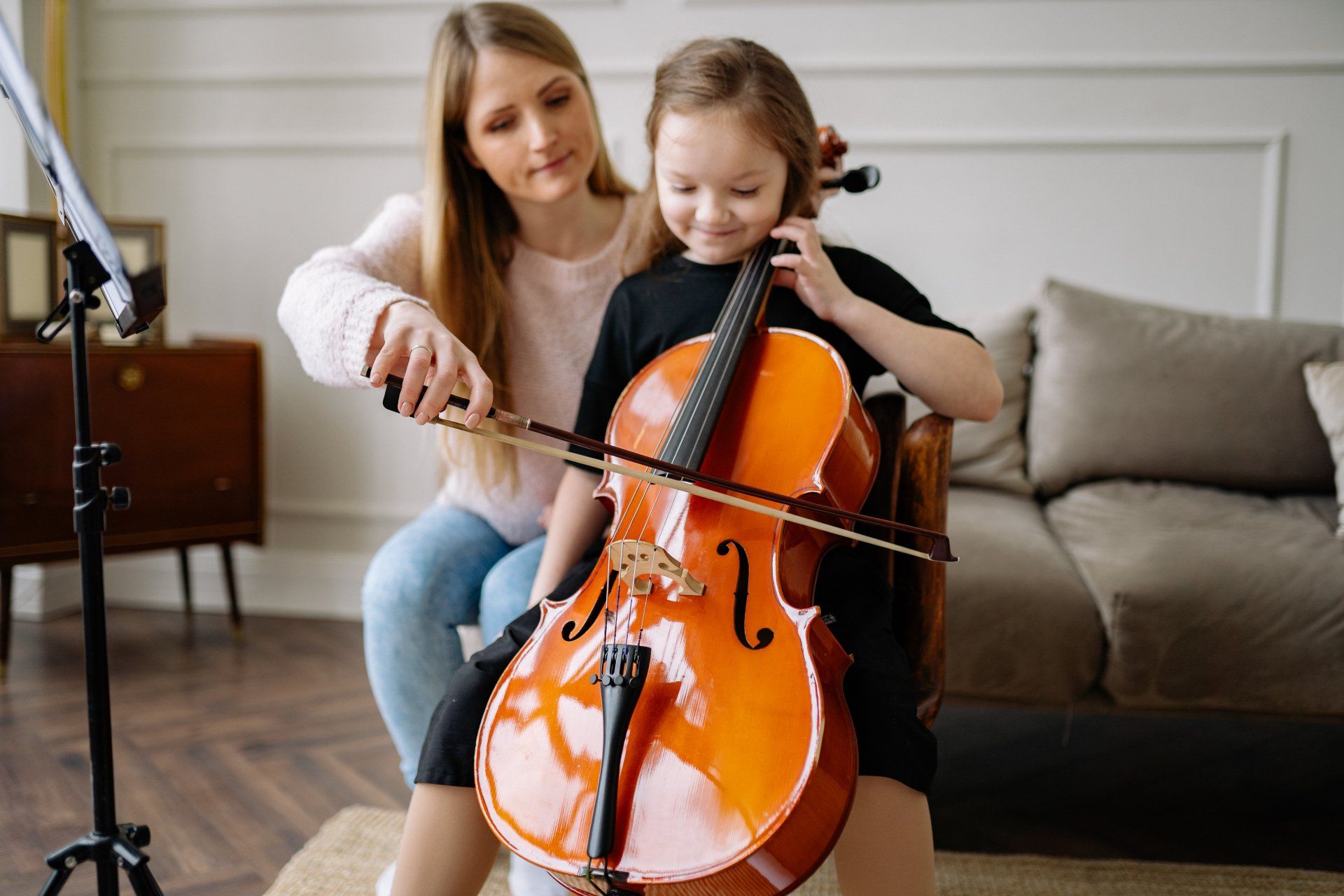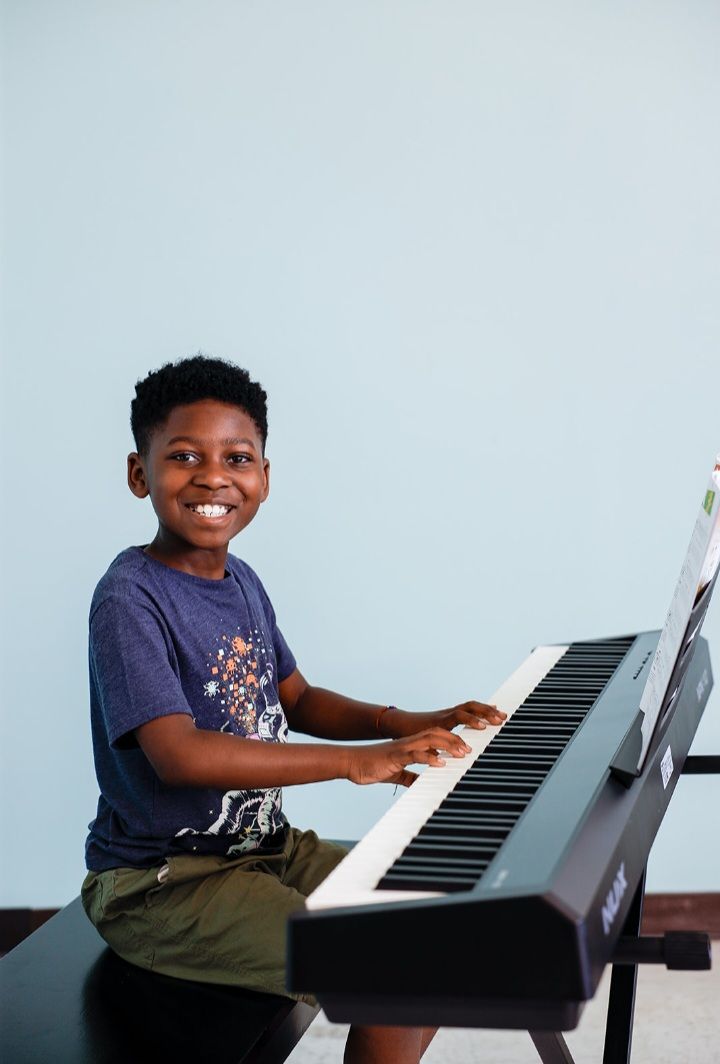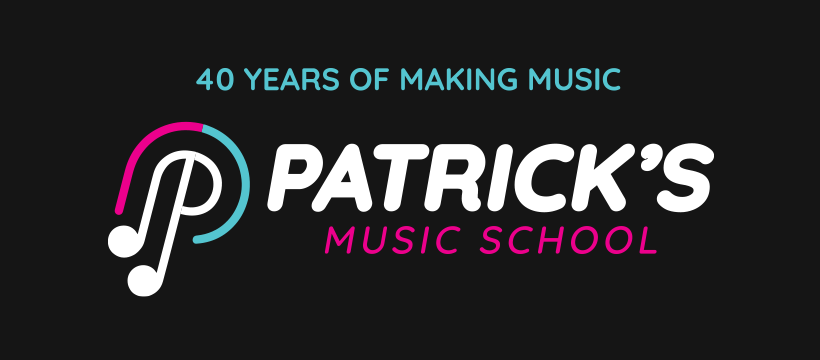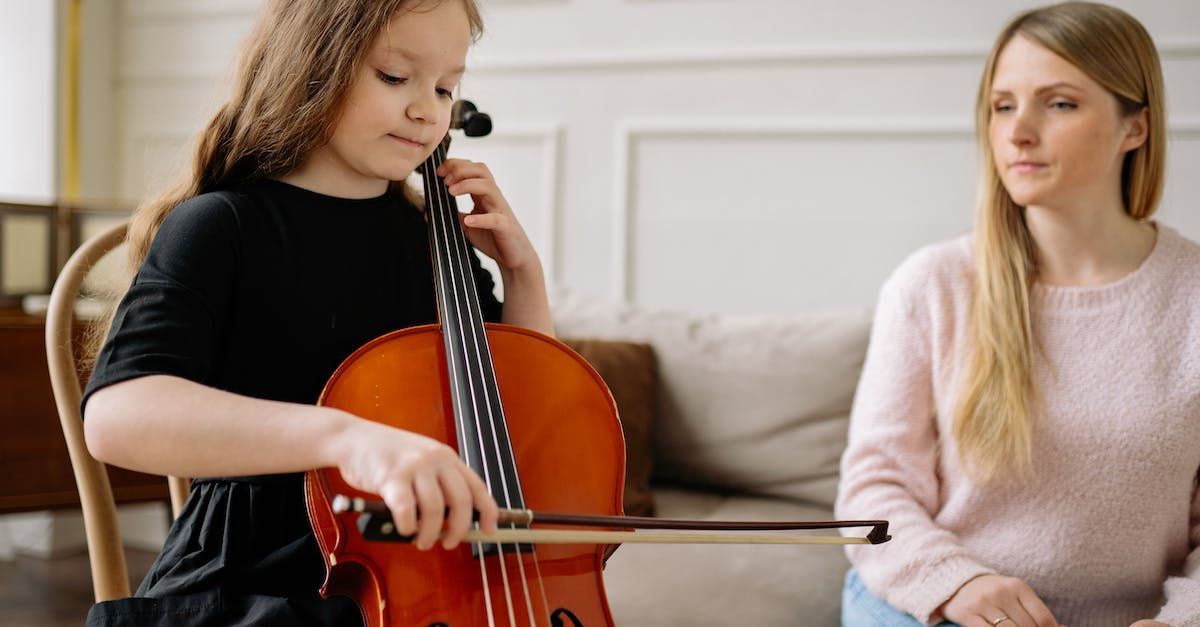Music Memory and Cognitive Development
Have you ever noticed how a particular song can trigger memories from the past or help you focus while studying?
Music has a powerful connection to memory and cognitive development. From enhancing learning and retention to improving language skills and boosting creativity, the benefits of music on the brain are vast.
In this article, we will explore the impact of music on memory and cognitive development, discuss the types of music that are most effective, and learn how music can be used for memory improvement and education.
Let's dive in and discover the fascinating relationship between music, memory, and cognitive development!
What Is the Connection Between Music, Memory, and Cognitive Development?
The intricate relationship between music , memory , and cognitive development is a fascinating area of study that delves into how the brain processes musical stimuli, retains memories, and enhances cognitive functions through neural connections.
Music has a remarkable ability to evoke memories, often serving as a trigger for recollection due to its emotional and sensory components. These musical triggers can activate various regions of the brain associated with memory encoding and retrieval, such as the hippocampus and prefrontal cortex.
Engaging with music, whether through listening, playing instruments, or singing, can stimulate neuroplasticity, the brain's capacity to reorganize itself by forming new neural connections. These neural pathways aid in cognitive development by enhancing skills like problem-solving, concentration, and creativity.
How Does Music Affect Memory?
Understanding how music influences memory involves deciphering the intricate connections between auditory stimuli, brain responses, and the encoding of emotional memories that contribute to cognitive development.
Music has the unique ability to evoke strong emotions, which in turn can trigger the formation of lasting memories. When we listen to a certain song or piece of music, our brain processes the sounds and melodies, linking them with the emotions we feel at that moment. These emotional connections play a crucial role in memory consolidation, as they create strong neural pathways that help us recall the associated memories later on.
Enhances Learning and Retention
Music serves as a potent tool for enhancing learning and retention by engaging cognitive skills, particularly in musicians, through the stimulation of auditory memory and reinforcement of neural connections.
When individuals engage with music, whether through playing an instrument, singing, or simply listening attentively, various cognitive processes are activated. These processes involve memory, attention, coordination, and emotional expression, all of which play a crucial role in the learning and retention of information. For musicians, the benefits are even more pronounced as they develop a heightened sense of auditory discrimination, fine motor skills, and creative problem-solving abilities.
Improves Recall and Recognition
Music has the remarkable ability to enhance recall and recognition by stimulating brain activity, promoting grey matter development, and inducing plastic changes that optimize cognitive functions related to memory.When individuals are exposed to music, various regions of the brain light up, engaging in complex neural processes that encode and retrieve memories more efficiently. This activation of brain areas responsible for memory consolidation and retrieval is crucial for enhancing one's ability to recall information.
The development of grey matter in the brain, particularly in the hippocampus and prefrontal cortex, is closely linked to memory functions. Music acts as a catalyst in this process, contributing to the growth and maintenance of these brain regions, which are essential for retaining memories.
The plastic changes that occur in the brain in response to musical stimuli play a pivotal role in improving memory functions. Neurons form new connections and pathways, creating a more robust network that supports better recall and recognition abilities.
Stimulates Emotions and Associations
Music acts as a catalyst for stimulating emotions and forming associative connections that enhance cognitive functions, fostering functional connectivity in the brain and evoking emotional responses critical for memory consolidation.
When the brain processes music, it engages various regions, including the auditory cortex, amygdala, hippocampus, and prefrontal cortex. These areas work together harmoniously, creating a symphony of neural activity. This intricate dance triggers dopamine release, the 'feel-good' neurotransmitter, reinforcing positive emotions and enhancing mood.
The rhythm and melody of music can synchronize neural pathways, optimizing cognitive processes like attention, memory, and even problem-solving skills. This synchronization strengthens neural networks, making memory recall more efficient and creating lasting emotional connections with the music.
What Are the Benefits of Music on Cognitive Development?
The benefits of music on cognitive development are manifold, encompassing enhancements in language proficiency, problem-solving capabilities, and social skills that contribute to holistic cognitive growth.Research suggests that exposure to music can significantly boost language acquisition , as it helps in improving vocabulary, grammar, and comprehension skills. Engaging with music stimulates the brain's problem-solving aptitude by enhancing critical thinking, creativity, and mathematical reasoning. Through group music activities, individuals also develop social competencies such as teamwork, communication, and empathy, supporting overall cognitive advancement.
Improves Language and Communication Skills
Music plays a pivotal role in enhancing language and communication skills, as evidenced by neuroscientific research highlighting its positive impact on cognitive abilities like verbal memory and linguistic proficiency.
Studies have shown that exposure to music can significantly improve language processing capabilities, leading to better comprehension and articulation of words. Music can activate multiple areas of the brain simultaneously, aiding in the development of strong neural connections essential for effective communication. Rhythmic patterns in music can help individuals with speech disorders to improve their verbal expression and communication skills. These findings underscore the powerful connection between music and language, illustrating how engaging with melodies and lyrics can shape our linguistic abilities."
Enhances Spatial Reasoning and Mathematical Abilities
Music has a profound effect on spatial reasoning and mathematical abilities , fostering cognitive development through activities like improvisation that engage spatial awareness and numerical processing.When individuals engage in musical activities, especially through improvisation, their brains are stimulated in a unique way that strengthens connections between neurons and enhances analytical thinking.
This heightened cognitive function not only improves spatial reasoning and mathematical skills but also boosts problem-solving abilities by encouraging individuals to think creatively and analytically.
The rhythmic and melodic patterns in music help individuals recognize mathematical patterns, fostering a deeper understanding of numerical concepts.
Boosts Creativity and Problem-Solving Skills
Music serves as a catalyst for boosting creativity and problem-solving skills by promoting brain plasticity and enhancing cognitive functions that facilitate innovative thinking and effective solutions.When individuals engage in musical activities, such as playing an instrument, composing melodies, or simply listening to music, various regions of the brain are activated, leading to improved neural connections and increased gray matter volume in areas associated with creativity and problem-solving.
Studies have shown that exposure to music not only stimulates the brain but also strengthens memory, attention, and executive functions, all of which are crucial for generating novel ideas and tackling complex problems.
What Types of Music Are Most Effective for Memory and Cognitive Development?
Certain types of music stand out as particularly effective for memory enhancement and cognitive development, with rhythmic patterns and rewarding compositions playing key roles in optimizing cognitive functions.These genres often feature repetitive beats and melodic patterns that can help reinforce neural pathways related to memory and cognitive processing. Research suggests that classical music, with its intricate harmonies and familiar structures, is especially beneficial for memory retention. Additionally, jazz music, known for its improvisational nature and complex rhythms, has been found to stimulate brain activity, enhancing creativity and problem-solving skills. Pop music, characterized by catchy hooks and simple chord progressions, can evoke strong emotional responses, aiding in memory formation and recall.
Classical Music
Classical music has long been recognized for its beneficial effects on memory tests and cognitive skills, showcasing far-transfer and near-transfer benefits that extend beyond musical contexts.
Far-transfer benefits of classical music can be seen in how listening to it not only enhances memory and focus during a music-related task, but also improves cognitive functions in other activities. This demonstrates the ability of classical music to positively impact various cognitive domains such as problem-solving, language skills, and spatial reasoning. On the other hand, near-transfer benefits imply that the cognitive improvements experienced while engaging with classical music can easily transfer to non-musical tasks, thus enhancing overall cognitive development.
Ambient Music
Ambient music influences brain structure and neural activity , as evidenced by neuroimaging studies that showcase the effects of ambient music on musicians' cognitive processes and emotional responses.Researchers have found that when individuals listen to ambient music, there is increased activity in regions of the brain associated with emotions and memory, such as the hippocampus and amygdala. This heightened neural engagement can lead to improved mood regulation and stress reduction. Studies have shown that ambient music can enhance creative thinking and problem-solving abilities, as it promotes a relaxed state of mind conducive to deeper contemplation.
Neuroimaging techniques like functional magnetic resonance imaging (fMRI) have revealed that ambient music not only affects brain regions linked to emotion and cognition but also alters neural connectivity patterns. These changes in brain connectivity suggest that ambient music may facilitate enhanced communication between different brain areas, fostering a more integrated and harmonious neural network.
Music with Lyrics
Music with lyrics plays a vital role in enhancing verbal intelligence and academic performance, as indicated by structural differences observed in individuals exposed to lyrical music that positively influence cognitive abilities.
This influence can be attributed to the complexity of processing both musical and linguistic information simultaneously, thereby exercising the brain's multitasking capabilities. Research suggests that exposure to lyrical music can improve language skills, memory retention, and analytical thinking, all of which are crucial for succeeding academically. The emotional and storytelling aspects of lyrical music can stimulate creativity and enhance critical thinking skills, contributing to a well-rounded academic profile.
How Can Music Be Used for Memory Improvement and Cognitive Development?
Harnessing the power of music for memory improvement and cognitive development involves engaging in activities like listening to music, playing musical instruments, and participating in musical endeavors that enhance motor skills and problem-solving capabilities.
Research has shown that music can stimulate various parts of the brain, helping to create new neural connections and pathways that improve memory and cognitive function. When individuals are exposed to music, especially at a young age, it can aid in language development, spatial-temporal skills, and emotional regulation. Playing a musical instrument requires coordination, concentration, and fine motor skills, which can all contribute to overall cognitive growth.
Listening to Music
Listening to music is a rewarding activity that enhances cognitive skills by promoting functional connectivity in the brain, facilitating memory retention, and elevating mood through the neurochemical effects of musical stimuli.
Research indicates that when individuals engage with music, various regions of the brain light up, creating a harmonious symphony within the mind. This activation not only improves cognitive functions such as attention, processing speed, and creativity but also strengthens neural pathways, which is essential for maintaining cognitive health. The intrinsic emotional responses evoked by music can have profound effects on mood regulation and overall well-being, making it a versatile tool for enhancing cognitive performance and emotional resilience.
Playing an Instrument
Playing a musical instrument is a multifaceted activity that enhances motor skills, cognitive abilities, and social interactions by fostering coordination, problem-solving, and emotional expression through musical performance.Engaging in musical activities not only refines motor skills but also boosts brain function, increasing memory and concentration. The intricate finger movements required to play instruments like piano or guitar strengthen hand-eye coordination and dexterity.
The complex cognitive processes involved in reading music and interpreting rhythm patterns stimulate the brain, enhancing problem-solving skills and critical thinking abilities.
Playing in a band or orchestra improves social competencies such as teamwork, communication, and empathy, as musicians learn to collaborate, compromise, and support each other to create harmonious music.
Participating in Musical Activities
Engaging in musical activities like improvisation fosters social skills and academic achievement by encouraging creativity, collaboration, and cognitive flexibility through interactive musical experiences.Collaborating with other musicians during improvisation sessions not only enhances teamwork but also boosts communication skills, as participants learn to listen and respond to each other in real-time, fostering a sense of unity and mutual understanding.
The cognitive demands of improvising, such as processing multiple musical ideas simultaneously and making quick decisions, contribute to improved cognitive flexibility, translating into enhanced problem-solving abilities and adaptive thinking in various areas of academic and personal life.
What Are the Limitations of Using Music for Memory and Cognitive Development?
While music offers numerous benefits for memory and cognitive growth, it also presents limitations such as constraints on grey matter development and challenges related to achieving near-transfer effects in cognitive tasks.One of the drawbacks of relying solely on music for cognitive development is the limitation it poses on enhancing grey matter. Studies suggest that although engaging with music can stimulate brain activity, the effects might be more specific to certain regions rather than promoting overall brain growth. This means that while music can benefit specific cognitive functions, it might not lead to comprehensive grey matter enhancements.
How Can Music Be Incorporated into Education and Therapy for Memory and Cognitive Development?
Integrating music into educational curricula and therapeutic interventions offers promising avenues for enhancing memory, cognitive development, and academic performance by leveraging the cognitive benefits of musical experiences in diverse learning and therapeutic contexts.Through exposure to music, individuals can strengthen their memory retention , boost their cognitive growth , and improve their academic outcomes . In educational settings, music can be utilized as a powerful tool to engage students, enhance their focus, and facilitate better information processing.
- For example, incorporating background music during study sessions can create a conducive environment for learning, helping individuals retain information more effectively.
- In therapeutic practices, music therapy has been shown to stimulate brain activity, improve mood, and reduce stress levels, all of which contribute to enhanced cognitive functions and overall well-being.
Music not only enhances learning experiences but also plays a significant role in boosting academic performance by fostering creativity, critical thinking, and problem-solving skills. The integration of music into educational and therapeutic settings offers multifaceted benefits for individuals seeking to optimize their cognitive abilities and academic achievements.













